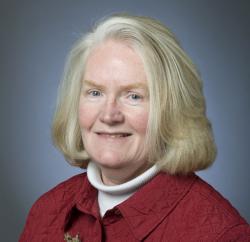June 14, 2010Source: Media RelationsThe Woods Hole Oceanographic Institution (WHOI) is partnering with two Louisiana institutions to determine the myriad impacts of the Deepwater Horizon oil discharge into the Gulf of Mexico and to devise and implement possible solutions to the disaster. WHOI has signed a Memorandum of Understanding (MOU) with Louisiana State University (LSU) and the Louisiana Universities Marine Consortium (LUMCON) to form a consortium called the Gulf Oil Research Program (GORP). “The purpose of the consortium is to work cooperatively to plan, secure funding for, execute and report on a program of scientific research to describe and quantify the effects of the oil spill on varied environments, communities and species in the affected region, and to develop and implement remediations where feasible,” according to the memorandum. “The explosion and sinking of the Deepwater Horizon oil platform in the Gulf of Mexico beginning on April 20, 2010, and the subsequent discharge of crude oil and gas from the wellhead at 1,500 m depth has created what may be the largest environmental catastrophe in U.S. history,” says the MOU. “Effects of the discharged oil and dispersant chemicals are expected to be widespread and long lasting in many environments of the Gulf of Mexico, including deep sea benthos and water column, sub-tidal benthos, coastal marshes and beaches, with significant economic impacts to fisheries, tourism and coastal development. “ "We are eager to work with our colleagues in the Gulf at LSU and LUMCON on the challenges of this environmental catastrophe,” said Laurence P. Madin, WHOI executive vice president and director of research. “WHOI has a long history of research on the geochemical and ecological consequences of oil spills, some of it based on 40 years of study of a spill off our own shores in 1970. “While the Gulf spill has shocked and horrified us all, it also has energized the research community to understand the effects and find ways to minimize current and future impacts." Madin said that Judith McDowell, chair of the biology department, director of the WHOI Sea Grant program and former associate dean, will serve as the Institution’s principal investigator for research in the collaboration. “Judy has a distinguished career in the study of pollution impacts, including oil spills, on marine physiology and ecology," Madin said. McDowell said the Gulf spill, while disastrous, presents a unique research opportunity. "The Deepwater Horizon spill is unprecedented in its complexity in enabling the scientific community to understand the fate, transport and potential long-term effects of oil in the Gulf of Mexico ecosystem,” she said. “Collaboration of WHOI with LSU and LUMCON will allow the institutions to join forces and bring our expertise to bear in understanding impacts on both near-shore and deep-water habitats of the Gulf of Mexico." Chris D’Elia, dean of LSU’s School of the Coast and Environment, said, "The three partners are very complementary. Our School has particularly strong faculty expertise in wetland, coastal, pollution and fisheries sciences. The Oceanographic is renowned for its expertise for advanced technology open-ocean and deep-sea research. “LUMCON, which is situated right on the coast, includes other Louisiana universities and has superb research facilities and ready access to the most productive coastal and estuarine waters in the Gulf. Partnerships such as this can help us study and respond to some of the world’s most challenging environmental problems. The Deepwater Horizon spill certainly qualifies as such.” LUMCON Executive Director Nancy Rabalais said LUMCON’s coastal location enables it to study “the firsthand impacts of the oil spill…Our superb research facilities, ships, and ready access to the most productive coastal and estuarine waters in the Gulf of Mexico will serve the three-member Consortium well,” she said. “The LUMCON faculty includes coastal ocean ecosystem scientists, biogeochemists, fisheries experts, and a coastal barrier island and marsh sedimentologist. The north-south alignment with WHOI and LSU is unique, with the advanced technology open-ocean and deep-sea research capabilities of WHOI, LSU’s expertise in wetland, coastal, pollution and fisheries sciences, and LUMCON’s coastal presence.” The agreement comprises numerous goals and conditions, including:
According to the memorandum, the project is expected to be supported “significantly” by British Petroleum, which runs the Deepwater Horizon rig that exploded. “But other sources of Federal, corporate and private funding may be pursued as available,” it adds. The principal investigators at each institution will oversee each research proposal prepared by scientists in the consortium. Each institution will be responsible for administration of grant funds to its scientists, and for all reporting requirements for work done by its scientists. The Memorandum of Understanding will be in effect for an initial term of three years. The participants have the option to renew it after that by mutual agreement.
The Woods Hole Oceanographic Institution is a private, independent organization in Falmouth, Mass., dedicated to marine research, engineering, and higher education. Established in 1930 on a recommendation from the National Academy of Sciences, its primary mission is to understand the oceans and their interaction with the Earth as a whole, and to communicate a basic understanding of the oceans' role in the changing global environment. Originally published: June 14, 2010 Last updated: July 28, 2014 | ||||||||||||||||||||
Copyright ©2007 Woods Hole Oceanographic Institution, All Rights Reserved, Privacy Policy. | ||||||||||||||||||||


